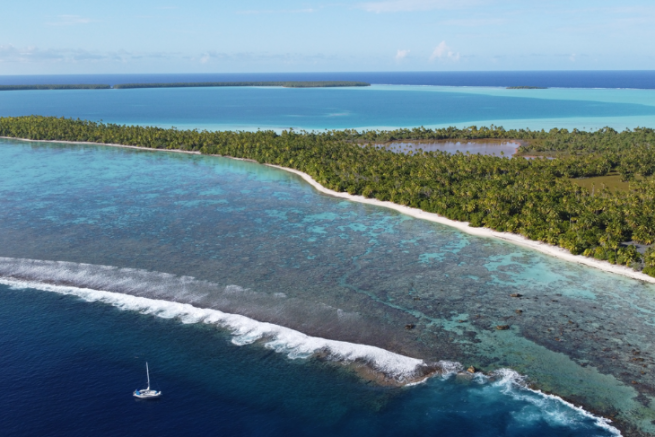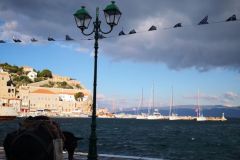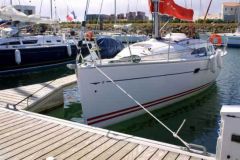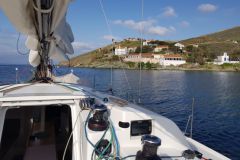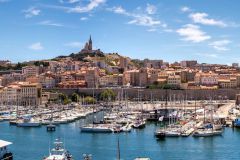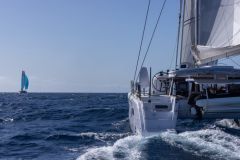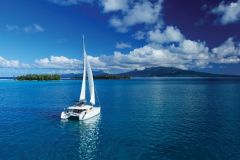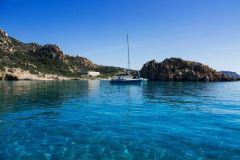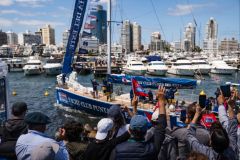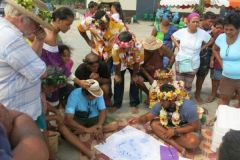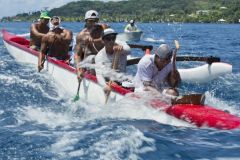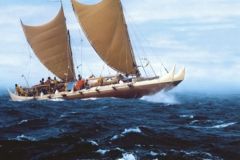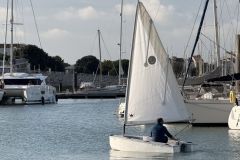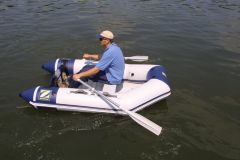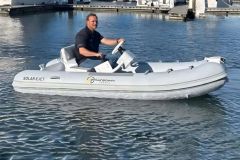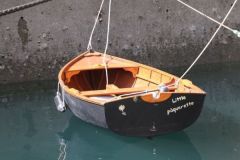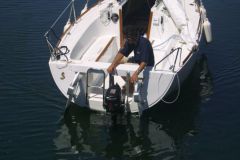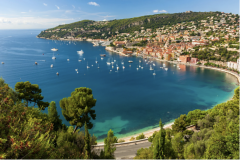Tetiaroa, the only atoll in the Windward Islands archipelago
About 30 miles north of Tahiti, Tetiaroa atoll is composed of 13 motus and measures 6 km≤.
It was owned by Marlon Brando until 2002. The atoll is now home to 240 inhabitants, all of whom live and work at "The Brando Resort", an energy self-sufficient hotel. Everything happens on the motu of Onetahi, the only inhabited motu, where the airfield is located, allowing a 15-minute flight between the hotel, Tahiti and Moorea.
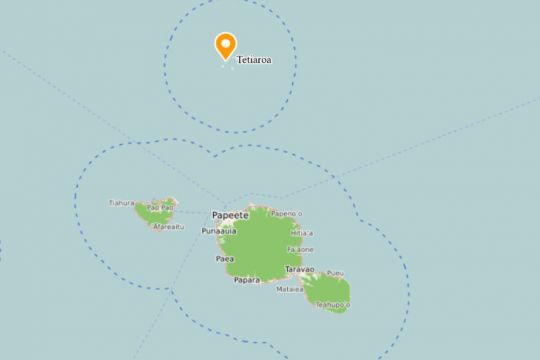
The island of Tetiaroa is known by boaters and visitors to the region for the difficulties it presents for landing.
Here, there is no pass to enter the lagoon or to reach the beach. So, to disembark, you have to go in a dinghy in front of a cut in the lagoon, wait for the right wave that will allow you to pass over the rocky plateau, and then navigate following a precise path - in shallow waters - between the different coral patties until you reach the beach.
A technique quite dependent on weather, swell and tide conditions, for which it is good to have some practice! Many people have been stranded in a dinghy on the coral. Two days ago, we met a sailor who told us that he had sunk his dinghy there‚?¶
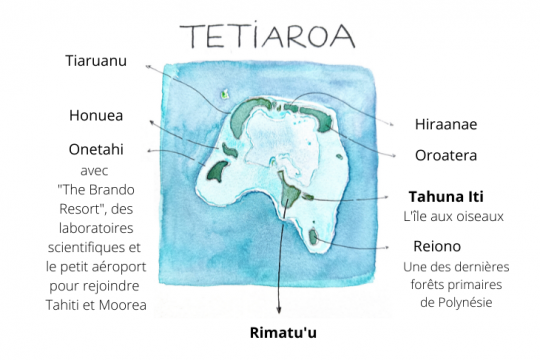
A perilous access to land
The passage may be complicated for us too. Our dinghy is at the end of its life. It has been under the Polynesian sun for 3 years, on a construction site in the Tuamotu Islands, and regularly comes unstuck despite all our attempts to repair it.
We are two adults and a 5 year old child, we will not be able to get out of our 5 HP outboard motor.
We hope that the period of high coefficients, which we have chosen to come, will help us to cross the flats with less difficulty.
Private moorings available
The anchorage area is located south of the motu Rimatu'u. Several catamarans regularly bring passengers to Tetiaroa on a day trip from Papeete-Tahiti, and several private mooring buoys have been installed there by charter companies. It is possible to use these buoys when they are available.

On board our Trisbal 36 Ta Mana, we arrive from Moorea Island in the middle of the afternoon, after a 33 miles sailing.
As we approached the atoll and the anchorage area, we did not see any available trunk. There is 40 to 50 meters of water and we cannot consider anchoring!
A catamaran is putting fenders on its starboard side, and we are thinking of going aft. But there are actually two more buoys available a little further on, and we will take one of them.
A striking mooring area
Ta Mana is comfortably installed on a trunk, about a hundred meters from the coast. The waves break just in front of the boat, it makes a lot of noise and it is very impressive!
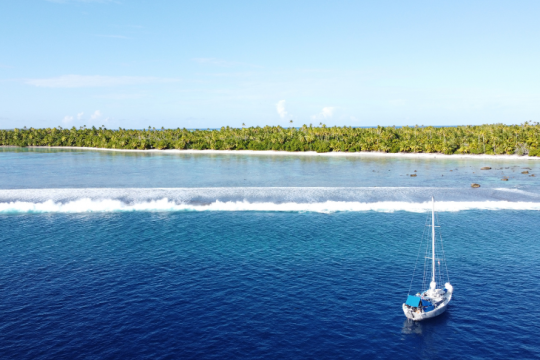
There are less people than in the anchorage areas of Tahiti and Moorea and we find the atmosphere of the atolls we like so much: several motus full of coconut trees, nothing but turquoise blue water and white sand.
A swim is necessary. We dived around the boat and were quickly joined by many small black tip sharks, curious but harmless. At the end of the day, I flew my drone to get a better idea of the area and try to prepare our descent to land. We will try to land at slack water the next day. For the time being, we fall asleep lulled by the sound of the waves crashing on the beach.
A descent conditioned by the power of the outboard engine
Around 9:30 am the next day, the three of us climb into the dinghy with the idea of going ashore. We are not convinced by the maneuver. There are some charter boats that drop their passengers on the beach, and we think of asking them to take one of us in their RIB, so that our dinghy can drop the other two.
Not wanting to bother them right away, we tried to go it alone. The three of us are in front of the bowl in the flat, waiting for "the right wave". The coral forms a real wall, whose top is slightly covered and then completely uncovered with each wave. We will not have to miss it!
We let some waves pass, not risking too much, hoping that the conditions will be quickly more favorable to allow us to discover this beautiful island.
Then, a crew member of a charter catamaran comes to find us. According to him, "it will never pass with 5 HP, especially for the return trip" . He kindly offers us to disembark with his biggest dinghy and his 15 HP motorization.
He will pick up his passengers at noon, which leaves us enough time to go for a ride!

A particularly rich fauna and flora
We go around the two motus of Rimatu'u and Tahuna Iti.
The first one is the one I flew over by drone. The vegetation is dense with many coconut trees. There is a small lake of brackish water and a white sandy beach which surrounds the whole.
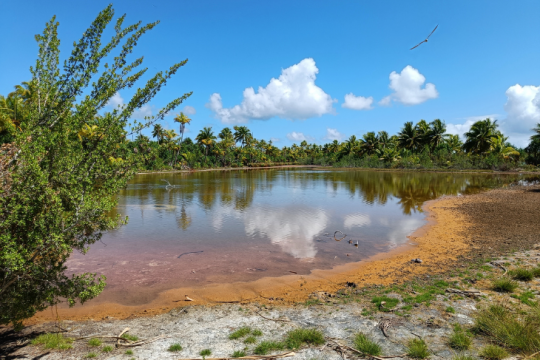
The second motu is also called "Bird Island". It is an ornithological reserve with several exotic species: Pacific reef egret, wandering sandpiper, Alaskan curlew, tawny plover, brown noddy, various terns and boobies¶
The birds are clearly on their territory and fly over us insistently to ask us to move away a little. In order to preserve the natural heritage, wooden stakes are planted in the sand off the beach and we must not go beyond.
Between the two motus, we enjoy a swim in the shallow lagoon. The sand is very fine, the water very warm and crystal clear, we can see some juvenile sharks. And on the beach, all the shells are inhabited by shellfish!
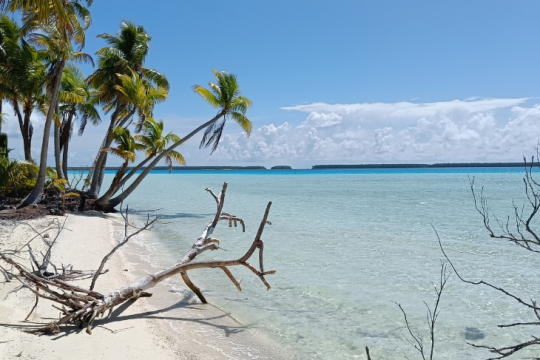
20 minutes to leave the island
After nearly two hours of stretching our legs, it is already the end of our visit.
We join the passengers of the two charter boats who are waiting for the crews in charge of collecting them.
The three dinghies of the two charter catamarans come to pick up their passengers two by two to be sure to get off the boat, making about twenty round trips and following the same path (at full speed) to pass between the coral spuds and through the cut in the flats.
Sometimes, the dinghy pilot slows down abruptly because the wave does not allow to pass over the coral wall and we have to wait for the next one‚euros¶
Our pilot explains us that they have in fact twenty minutes of lull between two big series of waves to transfer all the passengers. We will pass thanks to him without any problem!
In the afternoon, the charter catamarans leave for Tahiti. We enjoy a last swim around Ta Mana and a last sunset.
We will spend the night alone at anchor, aware of the luck we had to discover this magnificent destination and impatient for the continuation of our trip.

 /
/ 